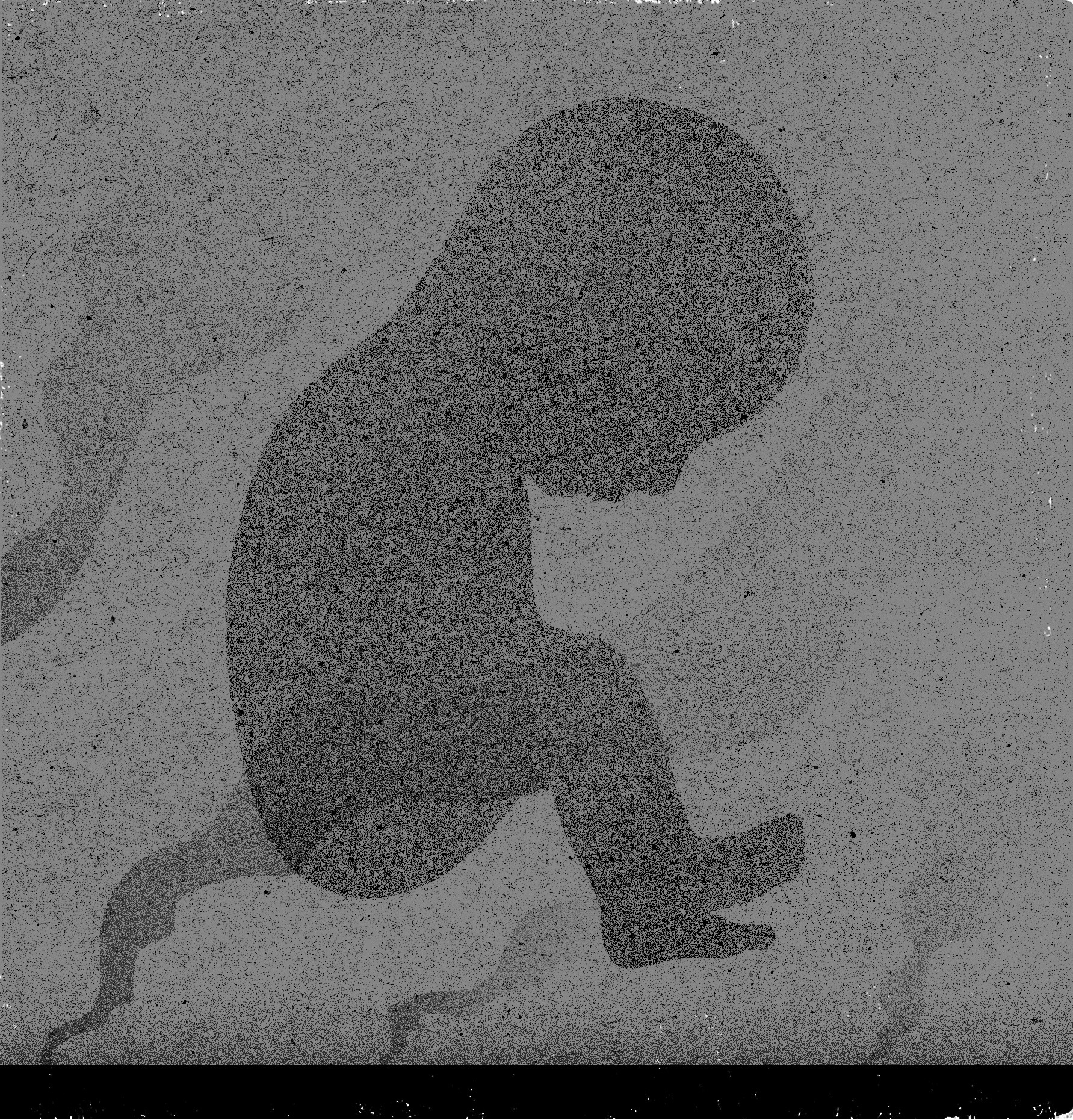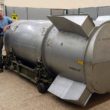Image Credit: Edel Rodríguez
When the United States revealed in January that it is testing a more nimble, more precise version of its B61 atom bomb, some were immediately alarmed. General James Cartwright, a former strategist for President Obama, warned that “going smaller” could make nuclear weapons “more thinkable” and “more usable.”
However, what is little known is that for the past 25 years, the United States and its allies have routinely used radioactive weapons in battle, in the form of warheads and explosives made with depleted, undepleted, or slightly enriched uranium. While the Department of Defense (DOD) calls these weapons “conventional” (non-nuclear), they are radioactive and chemically toxic. In Iraq, where the United States and its partners waged two wars, toxic waste covers the country and poisons the people. U.S. veterans are also sick and dying.
Scott Ritter, a former Marine Corps officer in Iraq and United Nations weapons inspector, told me, “The irony is we invaded Iraq in 2003 to destroy its non-existent WMD [weapons of mass destruction]. To do it, we fired these new weapons, causing radioactive casualties.”
The weapons were first used in 1991 during Desert Storm, when the U.S. military fired guided bombs and missiles containing depleted uranium (DU), a waste product from nuclear reactors. The Department of Defense (DOD) particularly prized them because, with dramatic density, speed, and heat, they blasted through tanks and bunkers.
Within one or two years, grotesque birth defects spiraled—such as babies with two heads. Or missing eyes, hands, and legs. Or stomachs and brains inside out.
Keith Baverstock, who headed the radiological section of the World Health Organization’s (WHO) Center of Environment and Health in the 1990s, explained why: When uranium weapons explode, their massive blasts produce gray or black clouds of uranium oxide dust particles. These float for miles, people breathe them, and the dust lodges in their lungs. From there, they seep into the lymph system and blood, flow throughout the body, and bind to the genes and chromosomes, causing them to mutate. First, they trigger birth defects. Within five or more years, cancer. Organs, often the kidneys, fail.
At one Basra hospital, leukemia cases in children up to age 14 doubled from 1992 to 1999, says Amy Hagopian, a University of Washington School of Public Health professor. Birth defects also surged, from 37 in 1990 to 254 in 2001, according to a 2005 article in Environmental Health.
Leukemia—cancer of the blood—develops quickly. Chris Busby, a British chemical physicist, explains: “Blood cells are the most easily damaged by radiation and duplicate rapidly. We’ve known this since Hiroshima.”
Dai Williams, an independent weapons researcher in Britain, says the dust emits alpha radiation—20 times more damaging than the gamma radiation from nuclear weapons. The military insists the dust is harmless because it can’t penetrate the skin. They ignore that it can be inhaled.
Fast forward to 2003. When the United States reinvaded Iraq, it launched bunker-busting guided bombs, cruise missiles, and TOW anti-tank missiles. It also fired new thermobaric warheads—much stronger explosives with stunningly large blasts. Many of these, says Ritter, contained some type of uranium, whether depleted, undepleted, or slightly enriched.
Williams says thermobaric weapons explode at extremely high temperatures and “the only material that can do that is uranium.” He adds that while today’s nuclear weapons are nominally subject to international regulations, no existing arms protocol addresses uranium in a non-nuclear context.
While the U.S. government has cleaned up some contaminated sites at home—such as a former uranium munitions plant in Concord, Mass.—it has yet to acknowledge the mess in Iraq.
“Iraq is one large hazardous waste site,” Ritter says. “If it was the U.S., the Environmental Protection Agency would declare it a Superfund site and order it be cleaned.”
We invaded Iraq to destroy its non-existent weapons of mass destruction. To do it, we fired these new weapons, causing radioactive casualties.
Left behind in Fallujah
Fallujah (pop. 300,000) is Iraq’s most contaminated city. The U.S. military attacked it twice in 2004, and in the November siege, troops fired thermobaric weapons, including a shoulder-launched missile called the SMAW-NE. (NE means “novel explosive.”)
Ross Caputi was there with the U.S. 1st Battalion 8th Marines. He told me, “We used the SMAW-NE and guys raved about how you could fire just one round and clear a building.” Concrete bunkers and buildings were instantly incinerated and collapsed. The DOD was not disappointed.
Cancers in Fallujah catapulted from 40 cases among 100,000 people in 1991 to at least 1,600 by 2005. In a 2010 International Journal of Environmental Research and Public Health article, Busby and two colleagues, Malak Hamden and Entesar Ariabi, reported a 38-fold increase in leukemia, a 10-fold increase in breast cancer, and infant mortality rates eight times higher than in neighboring Kuwait.
Busby sampled the hair of Fallujah women with deformed babies and found slightly enriched uranium. He found the same thing in the soil. “The only possible source was the weapons,” he states.
These numbers are probably low. “Iraqi women whose children have birth defects feel stigmatized and often don’t report them,” says Mozhgan Savabieasfahani, a Michigan-based environmental toxicologist who won the 2015 Rachel Carson Award.
Besides the cancers and birth defects, an Irish pathologist (who asked for anonymity) said an unusually high number of children have cerebral palsy (CP) near the city of Hawija. “I was skeptical when Iraqi doctors told me, but I examined 30 and saw it was classic CP. I don’t know what caused this, but the increase is almost certainly war-related.”
It is often argued that uranium occurs in nature, so it’s impossible to link soil and other samples to the weapons. But, Ritter told me that when experts examine a site, they take samples, study them in a special lab, and can easily tell the difference between uranium that is natural and that which was chemically processed. “The idea that you can’t link soil samples to weapons because of the presence of natural uranium is simply ludicrous. It’s done all the time by experts in the International Atomic Energy Agency and within the nuclear programs of all major nuclear powers,” Ritter says.
Burn pits and toxic clouds
In addition to the weapons’ lethal dust, Iraqis and coalition troops were exposed to poisonous smoke from huge open burn pits, some stretching 10 acres. From 2003 to 2011, U.S. military bases burned waste in the pits around the clock—spewing toxic clouds for miles.
Two were near Fallujah. Caputi says,“We dumped everything there. Our plastic bottles, tires, human waste, and batteries.”
Rubber, oil, solvents, unexploded weapons, and even medical waste were also tossed into the pits. As a 2008 Army Times article noted, Balad Air Base burned around 90,000 plastic bottles a day.
When plastic burns, it gives off dioxin—the key ingredient in Agent Orange, which caused malformations and cancer in Vietnam. Burn pits also produce hydrogen cyanide gas, Ritter says, which U.S. prisons used in their execution chambers from the mid-1920s until 2010, and which Nazis used at the Auschwitz and Majdanek concentration camps. Moreover, pits burning uranium-tinged debris produce uranium oxide dust.
When U.S. General Accountability Office (GAO) inspectors visited bases in 2010, they found much to criticize. Contractors running the pits—U.S. companies such as KBR and Halliburton—didn’t collect data on what they burned. (KBR said it wasn’t in their contract.) Few separated out toxic materials. Most burned plastics, although banned by regulations.
The GAO wrote that the fumes could irritate the eyes and lungs, damage the liver, kidneys, and central nervous system, and cause cancer, depending on how much is inhaled and for how long. Troops breathed them 24/7 during their tours, which were usually one year. Iraqis breathed them for eight years.
The now-closed Balad Air Base burned up to 200 tons of waste a day, and many U.S. troops stationed there now have diseases that mirror the diseases suffered by the Iraqis. Some have already died from brain and lung cancers, or leukemia, says Rosie Torres, who started burnpits360.org, when her husband, an Army captain, returned in 2008 with severe breathing problems.
The U.S. Department of Veterans Affairs (VA) x-rayed Captain LeRoy Torres’s lungs and diagnosed a disease of “unknown etiology.” When more veterans presented similar symptoms, the DOD asked Dr. Robert Miller, Vanderbilt’s Chief of Pulmonary Diseases, to study them. Dr. Miller told me, “We biopsied 200 veterans’ lungs and found they had constrictive bronchiolitis, a very debilitating disease. The DOD didn’t like that we biopsied them and that we found the disease was caused by what they were exposed to—which included the burn pits. After that, it didn’t send us more veterans to evaluate.”
Even as evidence mounts, the DOD and VA steadfastly deny the health effects of the weapons and pits. The Defense Health Agency website states, “No human cancer of any type has been seen as a result of exposure to either natural or depleted uranium.”
From 2003 to 2011, U.S. military bases burned waste in the pits around the clock— spewing toxic clouds for miles.
Further, in a 2011 DOD report, Exposure to Toxins Produced by Burn Pits, the VA adds: “The effects from burn pits are only temporary and the negative health effects dissipate once a soldier is removed from the source.” In 2014, the VA website assured veterans that “So far, no health problems have been found in veterans exposed to DU.”
While the military admits it used DU in Iraq from 2003 to 2011, it has downplayed the extent. U.S. Marine Corps Captain Dominic Pitrone told The Washington Spectator, “The only weapons with DU in the USMC inventory were 120mm tank rounds.” As for the new SMAW-NE warhead, he said it “does not contain uranium.”
But Ritter says these claims are disingenuous. Though other DU munitions, such as aerial bombs and 25mm cannon rounds, may not have been in the USMC inventory, they were still “available to and used by USMC units in Iraq.”
And while the USMC may not label the SMAW-NE and thermobaric Hellfire missile as uranium weapons, Ritter says that “this doesn’t resolve whether the shaped-charge warheads [inside them] make use of uranium-enhanced liners.”
U.S. coalition partners—such as Britain, which also used uranium weapons—echo the denials. So too do the WHO and the Iraq Ministry of Health, which concluded in 2012 that Iraq had fewer birth defects and cancers than developed countries.
But Hagopian says the ministry surveyed households instead of using hospital records. Finding this unscientific, a 2013 Lancet article called for a new study. Last November, the American Public Health Association asked the military to ban burn pits and fund research on their health effects. It also asked the WHO to rethink its conclusion.
Researchers tell of attempts by authorities to quash investigations. In 1991, for example, the United States tried to keep the WHO from “surveying areas in southern Iraq where depleted uranium had been used and caused serious health and environmental dangers,” Hans von Sponek, a former U.N. official, told the Guardian.
Karol Sikora, a British oncologist who headed WHO’s cancer program in the 1990s, told me his supervisor (who focuses on non-communicable diseases) warned him that they shouldn’t speak publicly about the cancers and birth defects “because this would offend member states.”
Similarly, Baverstock says, “I was on a WHO editorial committee and I warned about the uranium weapons’ geno-toxicity effect on DNA. My comments were rejected—probably because the WHO monograph didn’t include this.”
Those who persist fare badly.
Horst Gunther, a German physician, went to Iraq to study the spiking diseases. He saw children play with DU shells on Basra’s battlefield, took one to Germany to study, and found it was extremely radioactive. He told German authorities and was arrested for possessing it.
In 2003, Chief Justice Y.K.J. Yeung Sik Yuen of Mauritius, a delegate to the U.N. Sub-Commission on Human Rights, wrote of “the cavalier disregard, if not deception, on the part of the developers and users of these weapons regarding their effects.” After he refused to reverse his position that DU weapons are illegal and violate the Geneva Convention, the U.S. and Britain campaigned against his reelection to the subcommission. He lost.
Hagopian says researchers can’t study the uranium weapons’ effects because “the U.S. won’t fund the work.”
Why can’t the DOD, VA, Iraq government, and WHO come clean?
Ritter says, “The DOD doesn’t want the public to know about the toxic dust, because of the liability. As for Iraq, it will agree with the U.S. as long as it depends on the U.S. for financial and military support. As for the WHO, the U.S. contributes more to U.N. agencies and the WHO than any other country.”
Williams adds that there’s growing international concern about uranium weapons, since they’re radioactive. As early as 1991, Army Lt. Col. Ziehm warned in a memo that because DU weapons “may become politically unacceptable,” after-action reports must “keep this sensitive issue at mind.” In other words, don’t tell.
Media coverage of uranium weapons and the spiraling sickness has been meager. Malak Hamden said when she and colleagues published the 2010 Fallujah study, “CNN said something, but no newspapers touched the story.” A BBC reporter told Williams the public doesn’t want to know about uranium weapons.
In the meantime, the United States continues to build them. Williams notes that U.S. Patent Office records show Lockheed Martin and Raytheon hold patents for enhanced bombs and cruise missile warheads that include uranium options.
Today, with the U.S., Britain, France, Saudi Arabia, and Russia bombing Syria, and with the Saudis bombing and the U.S. firing drones into Yemen—with some of the same kinds of weapons unleashed in Iraq—it is likely that the people living there, along with fleeing refugees, will suffer just as the Iraqis and veterans have.
As Busby notes, uranium oxide dust is like a bomb that keeps going off. “People’s genes are damaged for generations. Scientists found this in 22 generations of mice, after Chernobyl. The only way mutated genes disappear is when carriers don’t have children.”
Barbara Koeppel is a Washington D.C.-based investigative reporter.







How long will it be before the enemies created by these atrocities retaliate in kind?
Those who authorized the manufacture and deployment of these known radioactive weapons are War Criminals and should be tried as such. The damage already done may well rank as an example of deliberate genocide rivaling that of Nazi Germany. At least Hitler did not launch an ever increasing death toll that will persist for centuries to come.
Indeed, the wonders of Christianity never cease to amaze. I cannot imagine the anguish of Jesus Christ as he sees the never ending parade of Evil deeds done in his name.
Regrettably, the writer has given a new hearing to long-discredited information about uranium weapons promulgated by Dai Williams, Chris Busby, and now, convicted sex offender Scott Ritter. To summarize, up to 450 tonnes of depleted uranium was widely used in Iraq in the form of armor-piercing incendiary rounds fired mostly by A-10s, with about 10% of total tonnage expended in rounds fired by tanks and Marine Harrier jets. But there is simply no documentary evidence nor reputable, replicated forensic data demonstrating the use of natural, non-depleted, or slightly enriched uranium in regular U.S. combat use. Nor is there any credible evidence that depleted uranium has been used in the warheads of guided missiles or bombs exploded in Iraq. Williams’ and Busby’s speculations on these matters are simply that – speculations, with no firm evidence amidst plenty of evidence otherwise. For more information and background, I urge the writer to consult the work of the International Coalition to Ban Uranium Weapons at https://www.bandepleteduranium.org/, the most reliable source for accurate information about this modern scourge of war.
Jack, I trully hope you will suffer some of the consequences of nuclear/military industrial complex, and while doing so have enough time to, regrettably or not, think again what you just said and done.
Yes, Jack this is all fantasy, just like Agent Orange, Gulf War Syndrome and the poisoned drinking water at Camp Lejeune… All those, and many more, were denied by the government and people like you for decades too.
This report reveals that for the past 25 years the US and its allies have been using radioactive weapons containing uranium that have been causing cancers in adults and very serious deformities and birth defects in children.
These weapons have been used in the former Yugoslavia, and the Middle East. Iraq has been the country most heavily polluted by depleted uranium munitions used in the wars in 1991 and since 2003, with areas near Basra and Fallujah very heavily polluted.
The widespread use of such munitions amounts to a war crime, but because the five permanent members of the UN Security Council use their UN vetoes to claim immunity from war crimes prosecutions we cannot expect to see the perpetrators of these crimes joining Radovan Karadzic in prison anytime soon.
Ireland is complicit in these war crimes because Shannon Airport has been, and is still being used, to transport large quantities of US war materials to its Middle Eastern war zones.
DUM = Depleted Uranium Munitions
No thanks Dick Cheney (war criminal)
https://www.youtube.com/watch?v=r7g7mor9d-0
I wonder how nuclear apologists like Jack can read this article, write that comment, and still sleep at night